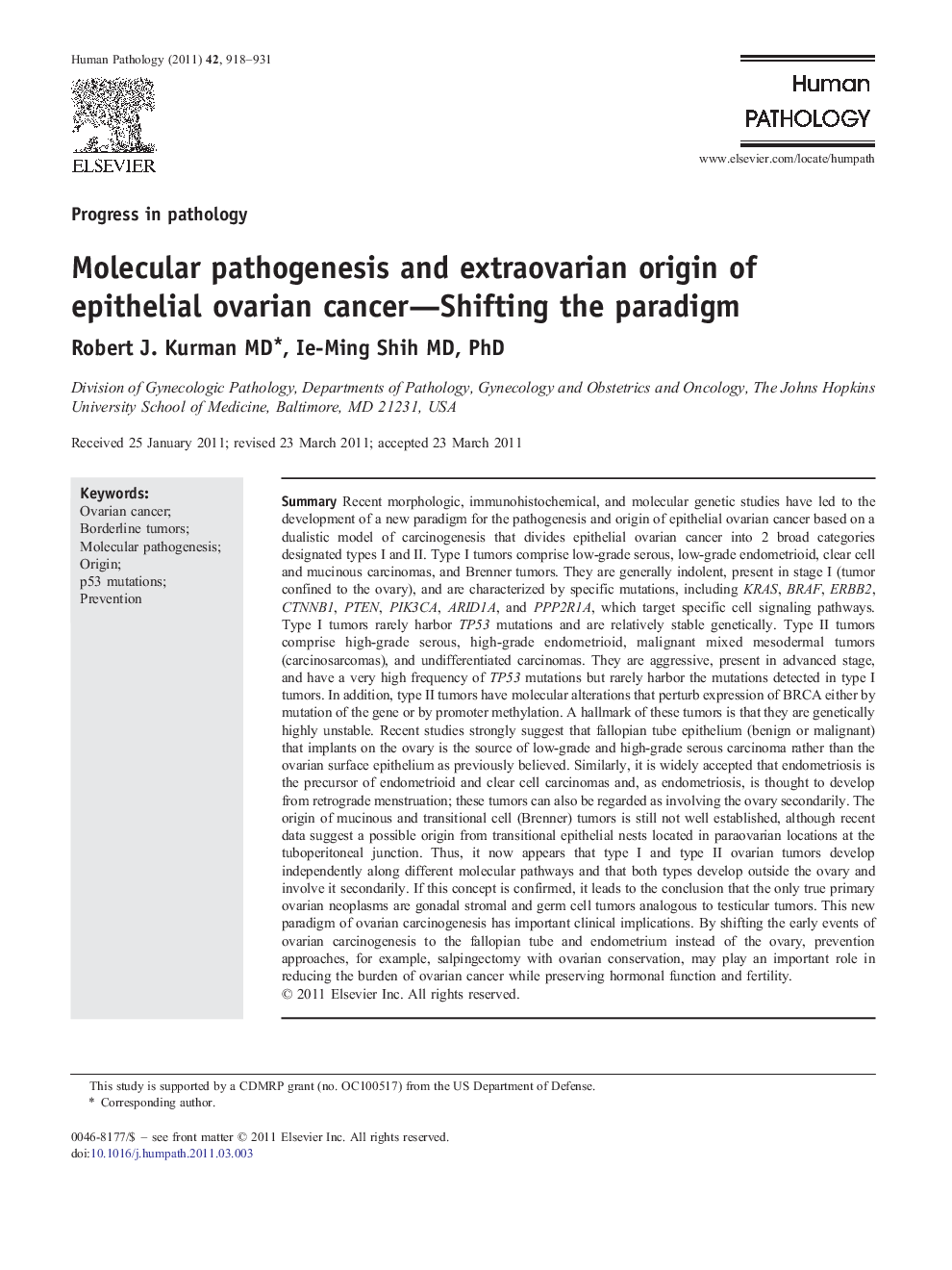| Article ID | Journal | Published Year | Pages | File Type |
|---|---|---|---|---|
| 4134148 | Human Pathology | 2011 | 14 Pages |
SummaryRecent morphologic, immunohistochemical, and molecular genetic studies have led to the development of a new paradigm for the pathogenesis and origin of epithelial ovarian cancer based on a dualistic model of carcinogenesis that divides epithelial ovarian cancer into 2 broad categories designated types I and II. Type I tumors comprise low-grade serous, low-grade endometrioid, clear cell and mucinous carcinomas, and Brenner tumors. They are generally indolent, present in stage I (tumor confined to the ovary), and are characterized by specific mutations, including KRAS, BRAF, ERBB2, CTNNB1, PTEN, PIK3CA, ARID1A, and PPP2R1A, which target specific cell signaling pathways. Type I tumors rarely harbor TP53 mutations and are relatively stable genetically. Type II tumors comprise high-grade serous, high-grade endometrioid, malignant mixed mesodermal tumors (carcinosarcomas), and undifferentiated carcinomas. They are aggressive, present in advanced stage, and have a very high frequency of TP53 mutations but rarely harbor the mutations detected in type I tumors. In addition, type II tumors have molecular alterations that perturb expression of BRCA either by mutation of the gene or by promoter methylation. A hallmark of these tumors is that they are genetically highly unstable. Recent studies strongly suggest that fallopian tube epithelium (benign or malignant) that implants on the ovary is the source of low-grade and high-grade serous carcinoma rather than the ovarian surface epithelium as previously believed. Similarly, it is widely accepted that endometriosis is the precursor of endometrioid and clear cell carcinomas and, as endometriosis, is thought to develop from retrograde menstruation; these tumors can also be regarded as involving the ovary secondarily. The origin of mucinous and transitional cell (Brenner) tumors is still not well established, although recent data suggest a possible origin from transitional epithelial nests located in paraovarian locations at the tuboperitoneal junction. Thus, it now appears that type I and type II ovarian tumors develop independently along different molecular pathways and that both types develop outside the ovary and involve it secondarily. If this concept is confirmed, it leads to the conclusion that the only true primary ovarian neoplasms are gonadal stromal and germ cell tumors analogous to testicular tumors. This new paradigm of ovarian carcinogenesis has important clinical implications. By shifting the early events of ovarian carcinogenesis to the fallopian tube and endometrium instead of the ovary, prevention approaches, for example, salpingectomy with ovarian conservation, may play an important role in reducing the burden of ovarian cancer while preserving hormonal function and fertility.
